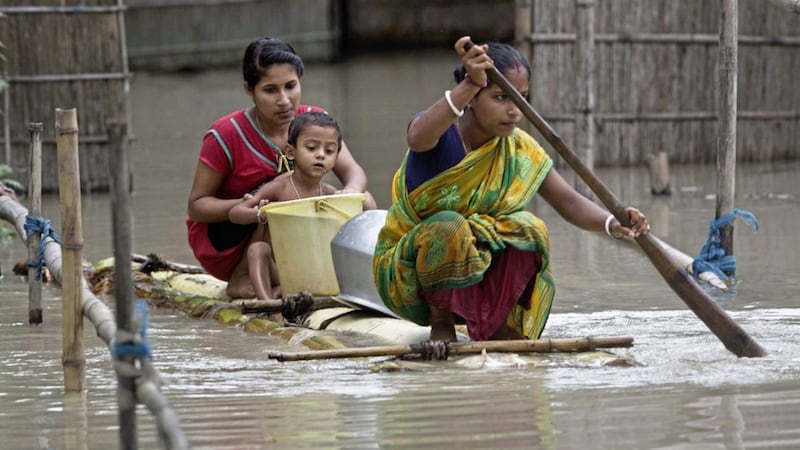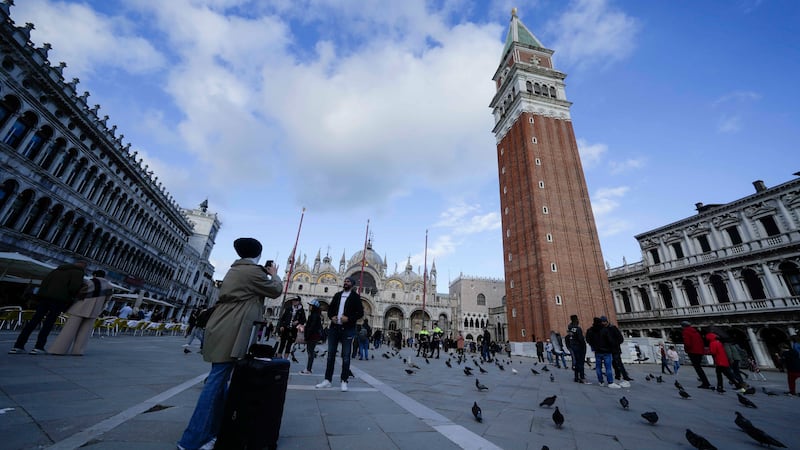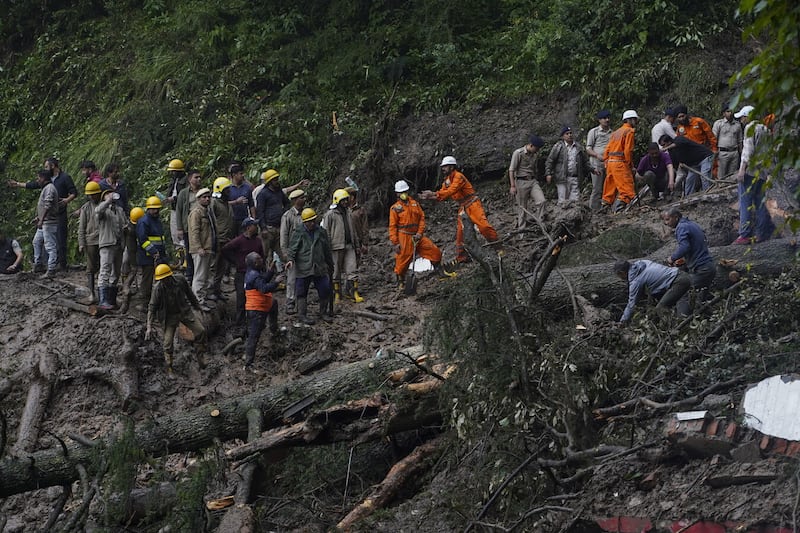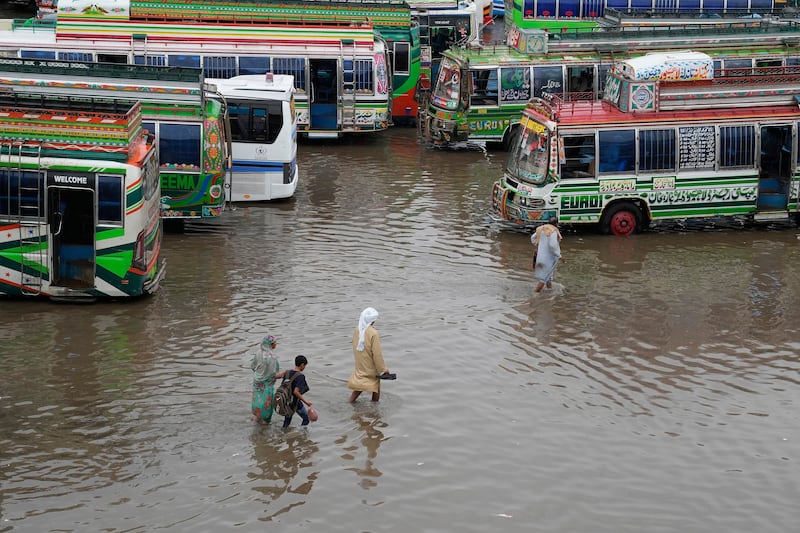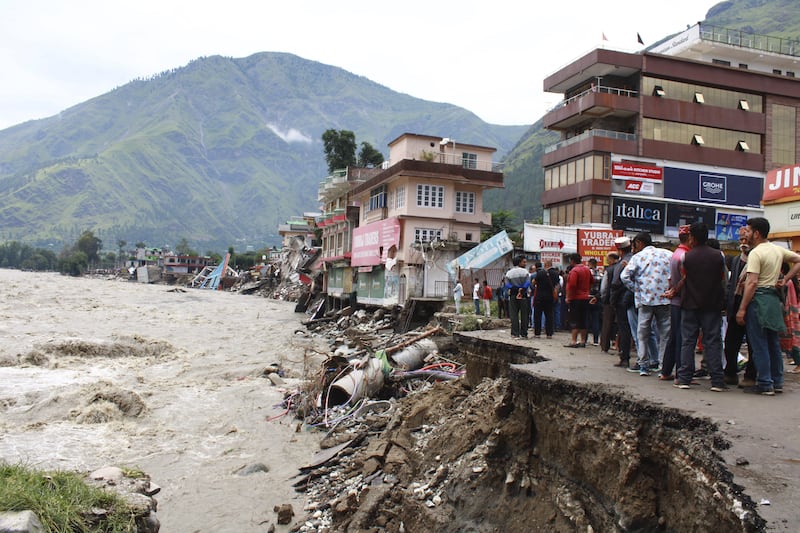AT LEAST 160 people have died and millions more have been displaced after heavy monsoon rains unleashed landslides and floods across northern India, southern Nepal and Bangladesh.
And in Sierra Leone's capital, more than 200 bodies have been brought to a morgue following heavy flooding and mudslides, officials said.
Sinneh Kamara, a coroner technician at the Connaught Hospital mortuary in Freetown, told the national broadcaster that the number of corpses brought in has overwhelmed the facility.
He told the Sierra Leone National Broadcasting Corp that bodies were on the floor of the morgue.
Mr Kamara also called on the health department to deploy more ambulances, saying his mortuary only has four.
Footage on television showed family members digging through mud in a desperate bid to free their loved ones.
Many of the impoverished areas of Sierra Leone's capital are close to sea level and have poor drainage systems, exacerbating flooding during the West African country's rainy season.
Officials are still trying to determine the scale of the disaster across the Himalayan foothills of South Asia, as weather forecasters predicted more rain and casualties were reported in multiple locations.
Many of those killed had drowned or been caught in collapsed houses or underneath toppled trees.
Nepalese police are searching for 85 people reported missing after rivers burst their banks and killed at least 75, police said.
The floods destroyed key rice crops in Nepal and drove thousands of farmers and their families to take shelter in schools or tents on higher ground, as water submerged roads and cut transport to affected areas.
Aid workers said many do not have enough food or water.
Sumnima Shrestha, a spokeswoman for anti-poverty charity Heifer International, said: "The heavy rains hit at one of the worst times, shortly after farmers planted their rice crop.
"Making matters worse, large numbers of livestock have been swept away in the flash flooding."
Landslides and flooding are common across South Asia during the summer monsoon season, and have become more dangerous thanks to widespread deforestation and poor urban planning which makes it harder for the land to absorb rainfall.
Bangladesh was bracing for worse flooding on Monday as weather forecasters predicted more rain. At least 18 major rivers are flowing at dangerously high levels, according to the state-run flood forecasting and warning centre.
Twenty people have been killed over the last few days in the low-lying delta nation, while another 600,000 are marooned, the country's disaster management minister said.
Bangladeshi soldiers were working to evacuate those who were stranded on rooftops or in trees, after floodwaters inundated hundreds of northern villages.
Around 368,000 people have taken refuge in more than 970 makeshift government shelters, said Bangladesh's disaster management minister, Mofazzal Hossain Chowdhury.
In the north-eastern Indian state of Assam, the flood waters have damaged bridges, downed power lines and washed away thousands of homes.
Officials said at least 2.5 million people had been affected, including some 200,000 now staying in 440 relief camps.
With railway lines inundated, the remote region was largely cut off from the rest of the country. Indian air force helicopters are dropping food and drinking water packets in the worst-hit districts, said Assam's chief secretary, VK Pipersenia.
Large areas of Assam's Kaziranga National Park were also under water, forcing many of the wildlife reserve's endangered rhinos and deer to move to higher ground.
Dozens of deer were killed by cars after they leapt onto a nearby highway to escape the floods.
Farther to the west, in the Indian state of Himachal Pradesh, soldiers recovered the bodies of 46 people who had been travelling in two buses which were buried in a massive landslide on Sunday.
